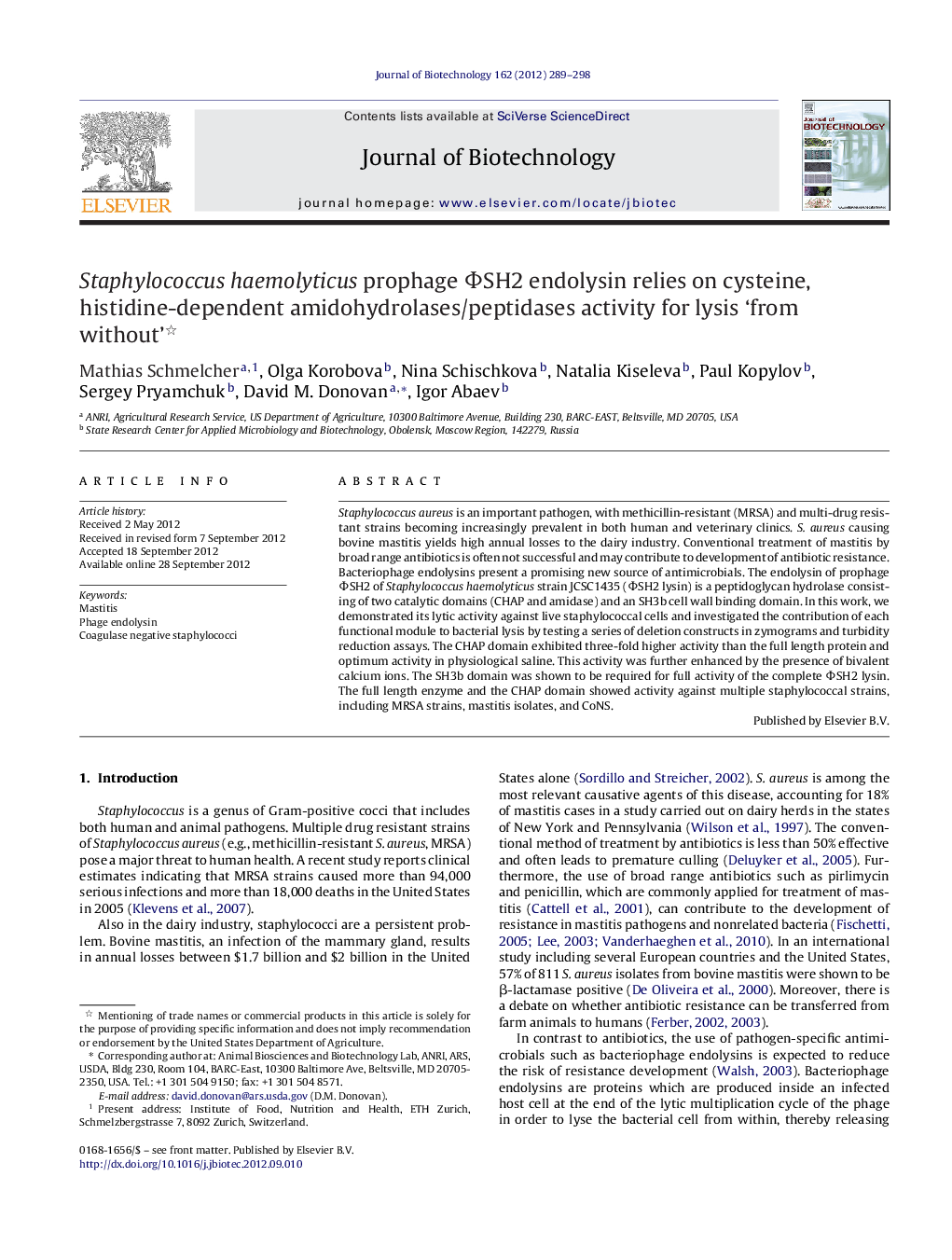| Article ID | Journal | Published Year | Pages | File Type |
|---|---|---|---|---|
| 23640 | Journal of Biotechnology | 2012 | 10 Pages |
Staphylococcus aureus is an important pathogen, with methicillin-resistant (MRSA) and multi-drug resistant strains becoming increasingly prevalent in both human and veterinary clinics. S. aureus causing bovine mastitis yields high annual losses to the dairy industry. Conventional treatment of mastitis by broad range antibiotics is often not successful and may contribute to development of antibiotic resistance. Bacteriophage endolysins present a promising new source of antimicrobials. The endolysin of prophage ΦSH2 of Staphylococcus haemolyticus strain JCSC1435 (ΦSH2 lysin) is a peptidoglycan hydrolase consisting of two catalytic domains (CHAP and amidase) and an SH3b cell wall binding domain. In this work, we demonstrated its lytic activity against live staphylococcal cells and investigated the contribution of each functional module to bacterial lysis by testing a series of deletion constructs in zymograms and turbidity reduction assays. The CHAP domain exhibited three-fold higher activity than the full length protein and optimum activity in physiological saline. This activity was further enhanced by the presence of bivalent calcium ions. The SH3b domain was shown to be required for full activity of the complete ΦSH2 lysin. The full length enzyme and the CHAP domain showed activity against multiple staphylococcal strains, including MRSA strains, mastitis isolates, and CoNS.
► CHAP domain of ΦSH2 lysin has higher lytic activity than the full length protein. ► The SH3b domain is required for full activity of the amidase domain. ► Ca2+ increases activity of the full length ΦSH2 lysin and its CHAP domain. ► ΦSH2 lysin constructs kill MRSA, mastitis strains, and Coag. Neg. staphylococci.
